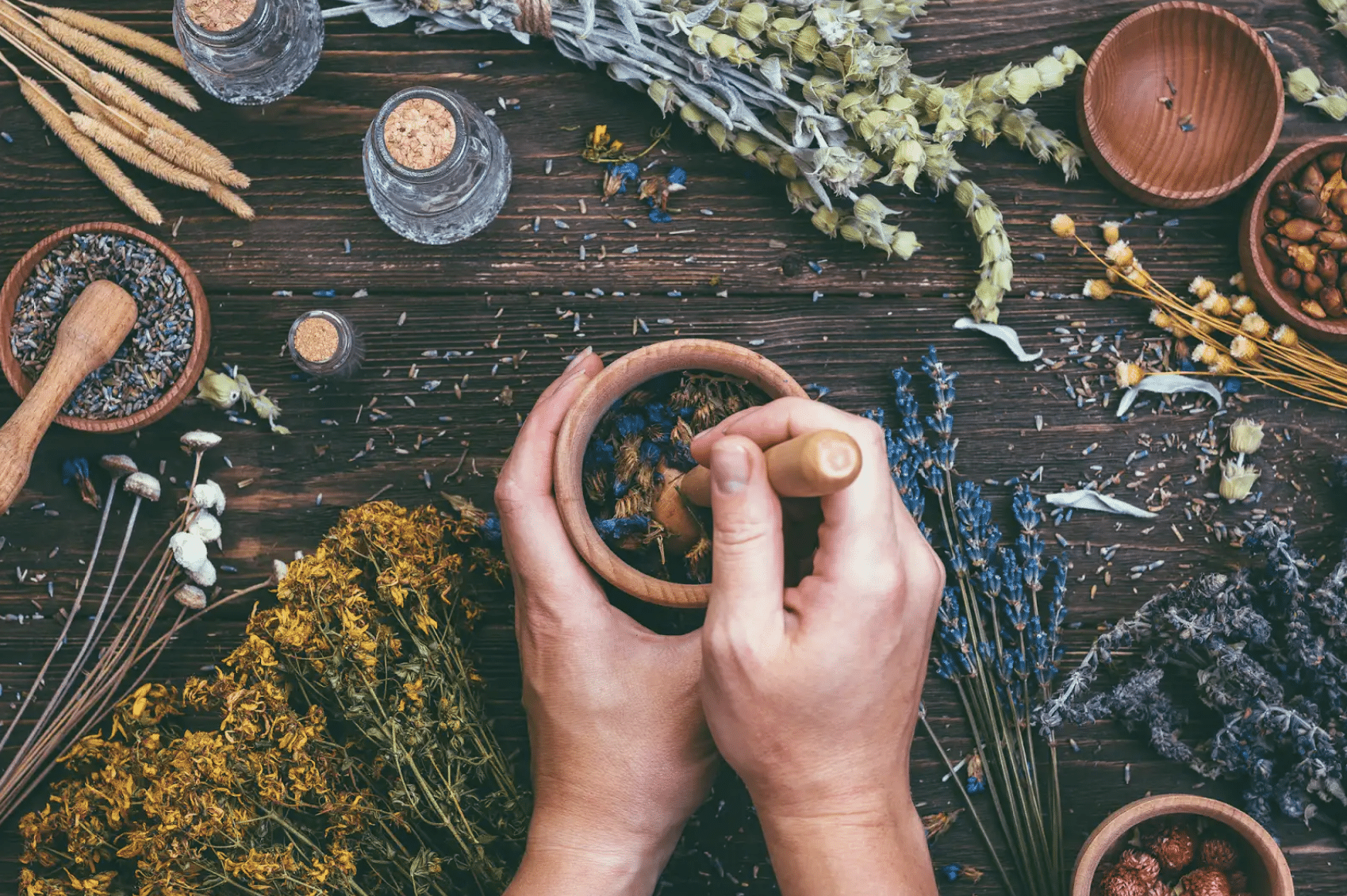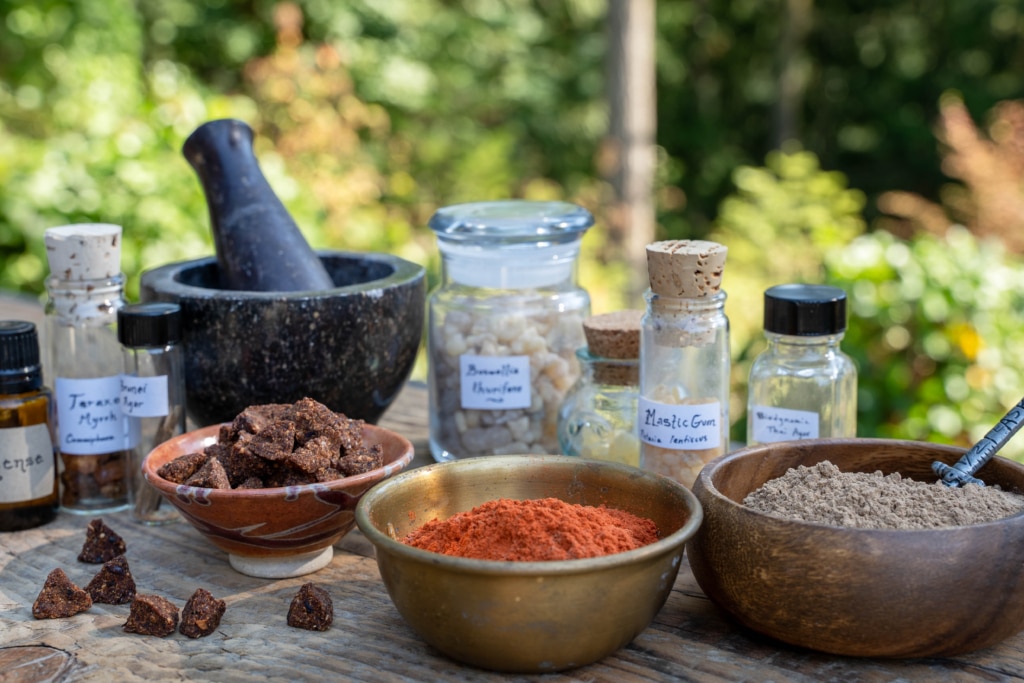
Have you ever followed a recipe exactly, only to have it fall flat, while someone else makes the same thing and it comes alive? Or crafted an herbal or aromatic remedy that worked well enough, but didn’t quite resonate or packed the punch the way you hoped? There is an unseen element woven into every creation, one that doesn’t come from a bottle, a book, or even experience. That element is intention – the energy you bring to your craft.
Whether you’re blending essential oils, preparing plant medicine, crafting incense, or simply brewing a tea, your internal state becomes part of the final form. It’s not just what you do – it’s how you do it, and more importantly, why. Intention is not an abstract concept; it’s a living ingredient that influences the quality of everything you create.
In this article, we’ll explore how your presence, purpose, and personal energy infuse your work with meaning and potency. You’ll learn why intention matters, how to cultivate it with care, and what it means to approach your craft as a co-creative ritual – one where your energy and the plant materials you work with are in sacred dialogue.
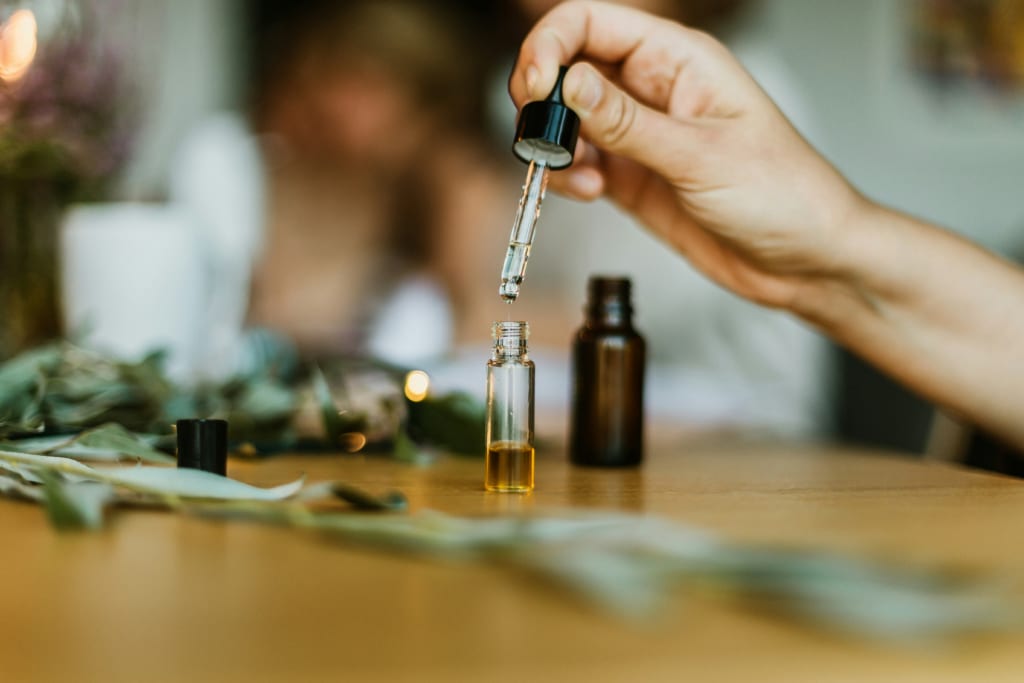
The Invisible Ingredient: What Is Intention?
If you’ve ever made an incense, a natural perfume, or an herbal remedy, you’ve likely spent a good amount of time thinking about the ingredients. It’s important to ask where the plant was grown and how it was cultivated – was it organic or sprayed with chemicals? Was it harvested in season, at peak potency, or picked too early, or too late? Was it harvested sustainably and ethically? Did someone take too much, too fast, without offering anything in return to the plants or to nature? These questions matter because the answers shape the quality of the final product. So why would intention be any different?
But what exactly is intention? According to Merriam-Webster, intention is defined as “what one intends to do or bring about,” or “a determination to act in a certain way.” Intention is the conscious energy or purpose you bring to an action. It’s the inner “why” behind what you do – the guiding force that shapes your choices, your focus, and the feeling you carry into your work.
In crafting, healing, or ritual, intention is not just a thought or wish; it is a felt alignment between your heart, mind, and body. It is the difference between going through the motions and infusing each moment with deeper meaning. When you create with intention, your presence becomes part of the outcome. You are not just making something; you are transmitting it.
Intention is the energetic soil of your work. It is the inner climate in which each act of creation is planted and grown. Just like sunlight and water influence the vitality of a plant, your state of mind and heart infuse the material with a subtle, but very real, energy. The more conscious your intention, the more alive your creation becomes.
Intention is a living current that flows through you as you choose, blend, grind, stir, pour, or ignite. It shapes the rhythm of your actions, quietly anchoring you to your craft, even when the outer world is noisy. Intention is a deeper orientation of the self – a conscious alignment with a specific purpose, feeling, or offering. It is the difference between simply making a balm versus crafting a balm for someone’s grief. Between blending a natural perfume and creating a scent to evoke courage, or memory, or peace.
Across cultures and lineages, we find this truth echoed: that the invisible is just as important as the visible. In Ayurveda, traditional practitioners whisper mantras into their preparations. In alchemical traditions, the state of the maker is considered a crucial factor in transmutation. In folk medicine, healers often begin by calling in the spirit of the plant, or by praying, or giving thanks. These practices are not superstition – they are a recognition of the interconnectedness between the medicine maker, the plants, and the natural world. Even modern science nods to this mystery. Experiments with water crystals, plant responses, and placebo effects suggest that intention may shape the world in ways we are only beginning to understand.
Just as you wouldn’t use a moldy herb or a synthetic oil in your creations, you might begin to consider: what energy am I bringing into this process? What kind of subtle signature am I weaving into this work? Because in the end, intention is not an afterthought. It is the first ingredient, and often, the most powerful one.
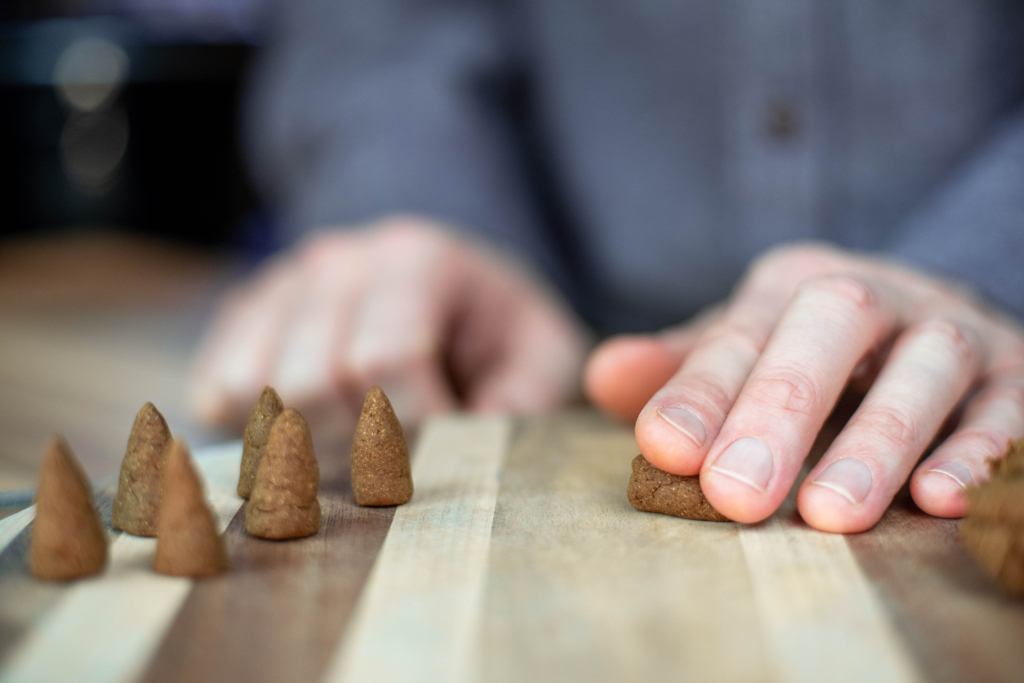
Presence in Practice: The Alchemy of Attention
There is a big difference between feeling stressed versus calm; rushed versus present; and unsettled versus grounded. These are not just states of being, they are qualities that shape your mind and your movements, and ultimately, the herbal and aromatic remedies you create. The plant world is attuned to frequency and rhythm, and picks up on this. It listens.
Your emotional, mental, and spiritual state leaves its signature on the craft. When you rush through a process, distracted or burdened, your energy can become scattered. It’s not that the finished product won’t “work,” but it may feel flat or out of tune, like a melody played with no feeling behind it. It may not penetrate to the same level of depth compared to the balanced presence of a balm made with intention, with steady hands and an aligned heart. The difference is subtle, but palpable.
Learn How to Make Irresistible Incense For
Enjoyment, Healing & Ritual with
✨ The Art of Incense Crafting Ebook ✨
Download Your Free Copy Below

Are you ready to learn how to craft your own natural incense? This free eBook covers the essentials of creating incense that burns beautifully and smells divine, exploring its role as an ancient aromatic medicine and sacred ritual tool. Avoid common pitfalls and unlock step-by-step instructions to make incense cones with ease.
A remedy made with a clear purpose resonates differently than one made without. Consider the difference between mechanically preparing a salve to check off a task, versus infusing each step with a thought or a blessing, or care for the one who will use it. In one, your hands move, but your heart is elsewhere. In the other, your hands are guided by presence, even prayer, and that is its own kind of magic.
When you’re fully present, your awareness acts like sunlight, illuminating and energizing whatever it touches. This kind of attention deepens your relationship not just with your craft, but with the plants themselves. You begin to hear their subtler teachings. You feel their aromas more deeply. You smell not just "Lavender," but the layered, living essence of a plant grown under a particular sky and in a particular soil. Sensory connection is the gateway to presence. When you engage your sense of smell, touch, and sight, you move from thinking into being. You shift from concept to embodiment, anchoring you into the now, where the unseen becomes tangible.
You may have already noticed this in your own practice. A perfume blended during a time of grief may carry a tender, aching resonance – soft, inward, reflective. An incense made in a moment of joy might sing with uplift and warmth. The energy behind your creation weaves itself into the fragrance, the feel, the essence. Even if the recipient cannot name it, they sense it. Something in the final product speaks to them beyond words. This is the alchemy of attention. It asks nothing extravagant, only that you arrive, fully. That you bring your essence and your presence into each moment of making. That you remember: your energy is not separate from the medicine. You are part of the formula.
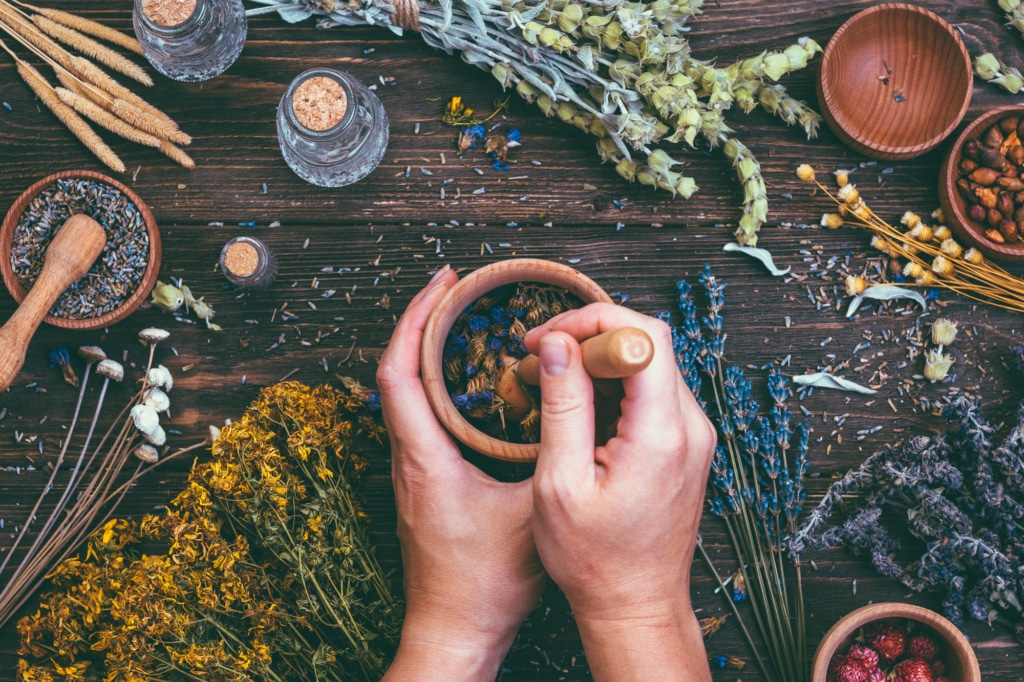
Tips for Cultivating Intentional Crafting
So, how do you begin to incorporate intention into your craft? How can you treat it as a living ingredient, not just a passing thought? The truth is, this is a deeply personal and intuitive practice. There’s no one right way to bring intention into your work. It starts by tuning into your “why,” the purpose behind what you're creating, the energy you wish to carry through your hands and into the final form.
What matters most is that your actions feel true to you. Even the simplest gestures, like lighting a candle, breathing deeply, or speaking a quiet blessing, can root you in presence and anchor your process. Below is a list of ideas to help inspire your own intentional rituals. Use what resonates, adapt what calls to you, and see what unfolds. Intention doesn’t require perfection or elaborate ceremony. Start small, stay curious, and notice how your process shifts – not just in how your creations turn out, but in how you feel while making them.
Create a special workspace: Designate a workbench or table where you craft with care. Include meaningful items like stones, dried herbs, photos, heirlooms, or offerings that remind you of your deeper purpose or connection to the plants.
Begin with breath or stillness: Try a few moments of grounding before you start. Whether it’s breathwork, meditation, stretching, or simply closing your eyes and arriving in the moment, this can help you clear external noise and distraction and focus inward.
Journal your intention: Before you begin, take a moment to write down your reasons for creating. Who or what is this for? What do you hope it carries, evokes, or addresses?
Curate your sensory environment: Light a candle, burn a resin you love, or choose music that brings you into a calm, receptive state. The atmosphere you create can become part of the energetic container for your work.
Work with natural rhythms: Consider aligning your crafting with moon phases, seasonal shifts, or personal cycles. Working in harmony with these rhythms can amplify your sense of connection and flow.
Incorporate ritual or plant allies: You might choose to clear your space beforehand by burning aromatic plants that feel protective or grounding. If using White Sage, please do so with cultural awareness and ethical sourcing (read more about this topic here).
Use affirmations, blessings, song, or prayers: Speaking or singing words aloud or in silence to give thanks to the plants and the elements, or guide the energy of your work. This can invite relationship and reciprocity.
Close with intention: Just as you open your practice mindfully, take a moment to seal your work when finished, through gratitude, breath, or a final gesture that honors the completion of your offering.
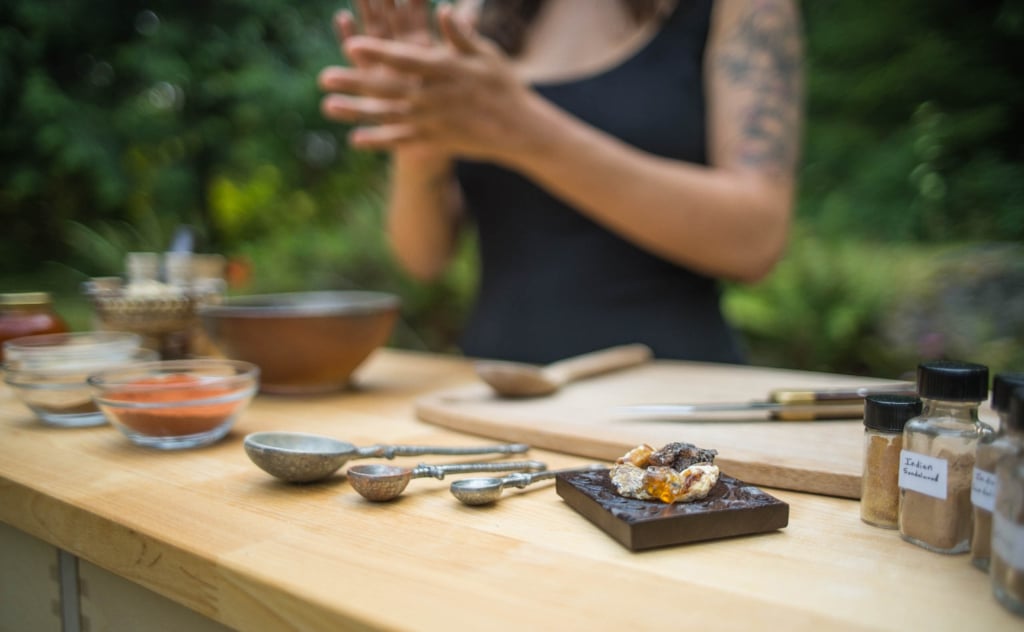
You Are Part of the Medicine
The remedies you craft, the formulas you blend, and the incense you roll hold more than plants and process. They carry your energy, your spirit, and your presence. Intention isn’t separate from the craft – it’s a key ingredient. The plants offer their medicine, and we are the vessel through which it moves. When we create with presence and purpose, we transform everything around us. Healing becomes relational, a dialogue between your inner world and the natural world, spoken through scent and care.
As Deepak Chopra says, “Intention is the starting point of every dream. It is the creative power that fulfills all of our needs.” Let it be the quiet ember at the heart of everything you make.
The next time you craft, pause. Check in with your energy. Set an intention. Infuse it into your work. Notice what shifts. This is how we create not just with our hands, but with our whole being. And that, too, is powerful medicine.

Want to make your own incense cones? Pick up one of our Incense Crafting Starter Kits today and be well on your way to crafting your own custom scents!
Article Written By Melissa Szaro

© 2025 The Northwest School of Aromatic Medicine. All rights reserved.
*The statements above have not been evaluated by the FDA, and are for educational purposes only. This article is not intended to diagnose, treat, cure, or prevent any disease. This article should not be taken as medical advice. Please consult your physician before you use this information for health purposes.
